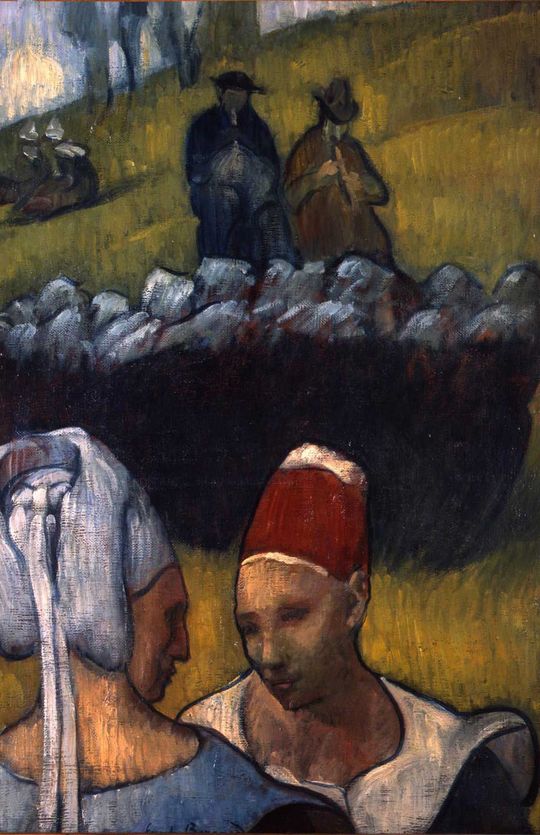ÉTUDE DE BRETONNES OR LA RONDE BRETONNE
1888-1890

Oil on canvas
D. 56-2-1
Allocated by the Musée d’Orsay in 1956
H. 81 cm - L. 54 cm
Iconic work, this famous painting perfectly illustrates the role played and claimed by Bernard in the invention of Synthetism.
In this painting, Bernard superimposes three scenes or rather three groups of characters without any apparent link. In the foreground, boldly carved, appear two busts of Bretonnes, one with a festive headdress and the other with a bonnet covered with a large red ribbon. A thick black circle delineates the contours of these two women who seem to be clad in the canvas. The brutal breaks, denying the gradients and the typical passages from the perspective of the Italian Renaissance, clearly indicate the influence of ukiyo-e.
ÉTUDE DE BRETONNES OR LA RONDE BRETONNE
1888-1890

Oil on canvas
D. 56-2-1
Allocated by the Musée d’Orsay in 1956
H. 81 cm - L. 54 cm
Iconic work, this famous painting perfectly illustrates the role played and claimed by Bernard in the invention of Synthetism.
In this painting, Bernard superimposes three scenes or rather three groups of characters without any apparent link. In the foreground, boldly carved, appear two busts of Bretonnes, one with a festive headdress and the other with a bonnet covered with a large red ribbon. A thick black circle delineates the contours of these two women who seem to be clad in the canvas. The brutal breaks, denying the gradients and the typical passages from the perspective of the Italian Renaissance, clearly indicate the influence of ukiyo-e.
